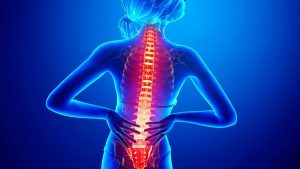
- Do Not Sit For More Than 30 Minutes at a Time. Many people have been experiencing increased back and neck pain due to prolonged periods of sitting, especially working in front of their computers. Our muscles and joints stiffen from sustaining any posture, especially sitting, for too long. So take frequent breaks from work at the computer. Walk around, get some water, stretch, etc.
- Sleep With Pillows Under or Between Your Knees. If you are a back sleeper, a pillow or two under your knees will help take the pressure off your back and allow your spine to heal throughout the night. If you are a side sleeper, then a pillow between your knees is ideal to keep your spine in proper alignment. The pillow under your head should be just high enough, but not too high to maintain proper neck alignment. This height is different for everyone. If you are a stomach sleeper, place a pillow under your belly to prevent the spine from going into an excessive lordosis.
- Sleep On a Mattress That Is Firm Enough To Support Your Spine. If your mattress is older than 10 years, it may be time to invest in a new mattress. As a mattress ages, it tends to sag and soften, and eventually not provide enough support for your spine. Your mattress should be firm enough to keep your spine in alignment, but soft enough for comfort which is a matter of personal preference.
- Take Walks Outside. Walking provides a gentle rotation for your spine which helps keep it mobile. Walking will also stimulate blood flow to the muscles of the spine and legs which is necessary for nutrition and healing of the spine. Walking outside in nature has an additional benefit of stress reduction.
- Breathe Into Your Belly. Breathing into your belly, or diaphragmatic breathing, is a healthier way to breathe for your spine, and especially for your neck. Many people breathe too fast and they also breathe more into their chests, as opposed to in their bellies. We are meant to use a large muscle under our rib cage, called the respiratory diaphragm for inhalation. The problem with chest breathing is that we are taking in less air with each breath and therefore breathing faster than is necessary, and we will be using accessory muscles in our necks to lift the rib cage. This will tighten our necks and shoulders, causing pain and spasm over time.
I hope you found this information helpful. We specialize in treating chronic back and neck pain using a gentle, “hands on” treatment called Myofascial Release (MFR), which has helped many people with back and neck pain, even when all else has failed. If you have any questions do not hesitate to reach out to one of our physical therapists at either of our 2 locations in Babylon and Massapequa, Long Island, New York at 631-376-0600 or 516-590-7611.
